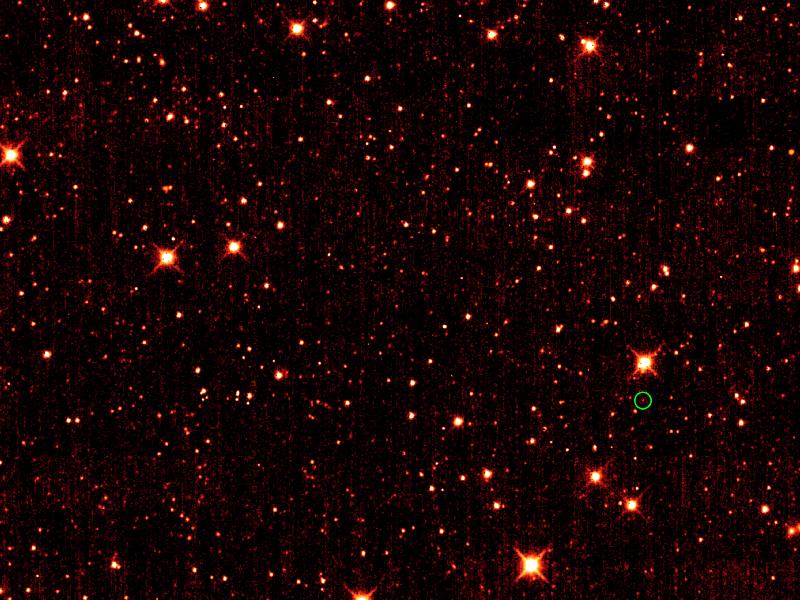NASA reported yesterday that Canadian astronomer Martin Connors of Athabasca University identified a 1000-foot-wide asteroid orbiting in a very convoluted path around the Earth’s leading LaGrange point.
Connors made the discovery using data from NASA’s Wide-field Infrared Survey Explorer (WISE) spacecraft.

(Image from the WISE spacecraft, with the newly discovered asteroid 2010 TK7 circled in green. NASA image.)
Surprisingly, the New Scientist article in which I first learned about the find pitches it inaccurately as an asteroid stalking the Earth. It is more accurate to say the asteroid is leading the Earth in its orbit around the sun.
The asteroid is roughly 1,000 feet (300 meters) in diameter. It has an unusual orbit that traces a complex motion near a stable point in the plane of Earth’s orbit, although the asteroid also moves above and below the plane. The object is about 50 million miles (80 million kilometers) from Earth. The asteroid’s orbit is well-defined and for at least the next 100 years, it will not come closer to Earth than 15 million miles (24 million kilometers).
NASA has an interesting video of the asteroid’s orbit: Earth’s First Trojan Asteroid (NASA video)
Alas, 2010 TK7’s odd orbital path probably excludes it from being explored and exploited any time soon. But there are plenty of other possibilities still waiting to be found for future explorers … and even for fictional ones like the “Asteroid Consortium” in my novel.








